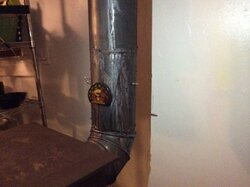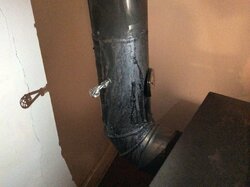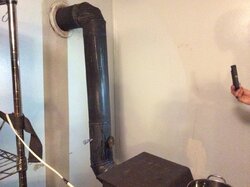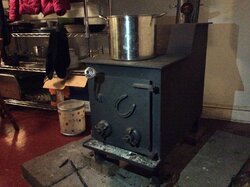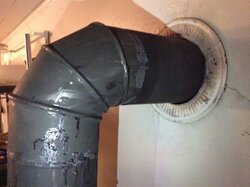 View attachment 152043 View attachment 152044 I moved in about 6 months ago, and am now experiencing winter with a wood stove for the first time. I have lived with fireplaces with inserts before.
View attachment 152043 View attachment 152044 I moved in about 6 months ago, and am now experiencing winter with a wood stove for the first time. I have lived with fireplaces with inserts before.I have lots of creosote running down the outside of the stove pipe. I have replaced the old pipe and still have the problem.
It is single walled. I put the new pipe together exactly like the previous one. I added stove and fireplace cement and mortar to the fittings and three screws to each connection. I am posting pics.


